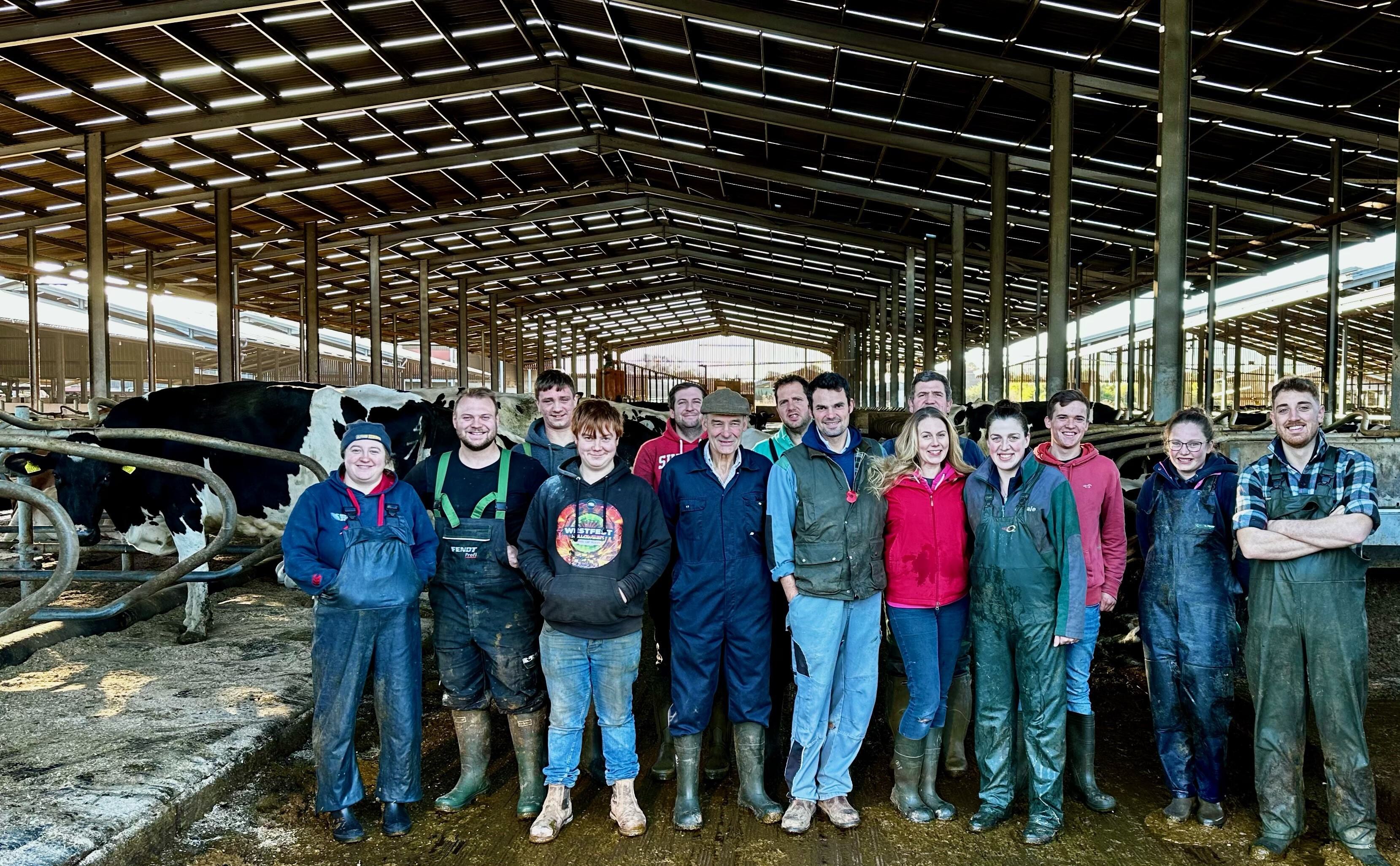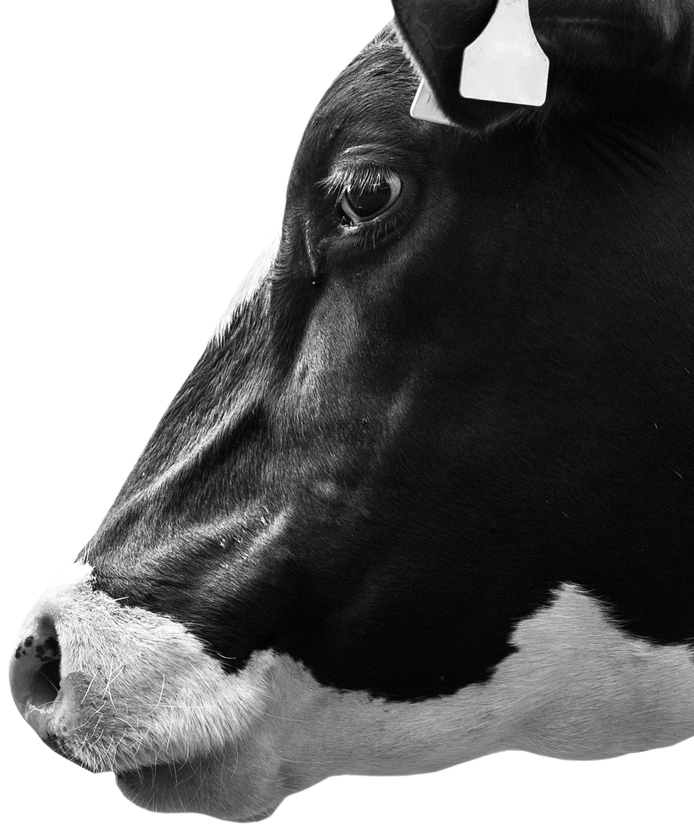Venn Family of Newley Farm, Taunton, Somerset
Newley Farm, near Taunton in Somerset, has been in the Venn family for 101 years. The family’s commitment, now under the guidance of fourth generation Will Venn, to develop a sustainable dairy business has earned it a place in the final six in the 2024 NMR/RABDF Gold Cup.The dairy herd now numbers 690 milkers, which are a mix of 550 Holstein and 140 Jersey cows.
Will’s great grandfather bought the 24-hectare farm in 1923. His grandfather built up the dairy and also ran a milk delivery round that was subsequently sold.
After a period of rationalisation and restructuring, Will now runs Newley farm in partnership with his wife Kate and father Tim, supported by a dedicated team of staff who live locally or on site.
Most work, including silage making, is carried out in house. The unit’s 280 hectares supports the all-year-round calving, fully housed herd with grass and maize grown for silage and wheat produced for feeding back to the cows. A further 80 hectares of maize ground is rented.
“This mix of crops builds resilience into our forage production and continues our circular approach to cropping and ensuring soil health, which has been used for generations,” says Will.
Strides to improve the yield and milk quality and breed a more consistent herd of Holstein cows started with the use sexed semen in 2014.
The introduction of 50 Jersey cows, bought from Will’s uncle in 2018, and a commitment to buy his newly calved heifers for 12 months have boosted the herd’s average milk quality from the Holstein baseline of 4% fat and 3.4% protein.
Committed to expanding the dairy business, the family has undertaken significant improvements in facilities since 2016 including a purpose-built cow shed for 320 cows and a slurry tower, and more recently another cubicle house, collecting yard shed, parlour, tank and handling facility.

Bovine TB hampered the expansion to 700 cows and heifers, which they have only recently achieved with the purchase of a group of in-calf heifers.
Breeding, in both Holstein and Jersey, is focused on producing a more robust and healthier cow with good constituent values. Care is taken to control stature in the Holstein and promote udder and feet traits in the Jersey. Will narrows down sire choices using the AHDB genomic list, then uses Genus’ program to plan matings.
The milking herd is run in four groups and feed rates are adjusted through the feeder wagon with energy corrected milk values monitored for each group. A partial mixed ration comprising home-grown forages, caustic wheat and a protein blend, is fed. Cows are topped up to yield with concentrates, adjusted for body condition, through out-of-parlour feeders.
Herd health is focused on prevention with vaccination for BVD and IBR. A herd health scheme is in place for Johne’s disease, Neospora and mastitis. Management data, including health-related actions, mobility and body condition scores are recorded on the dairy management system Uniform, which links with the herd’s NMR records and provides current management data and action lists.
The herd is mobility scored once a fortnight, and feet are trimmed three times during each lactation. Body condition is scored every six weeks, and the aim is to minimise post-calving losses.
Working with Mount Vets, selective dry cow therapy is used and cows requiring antibiotics at drying off are identified. Herd performance data is evaluated quarterly, by Map of Ag, and results are discussed with Will.
Countryside stewardship schemes have been followed on the farm for many years and are an important part of the Venn family’s farming strategy. It has included alternate hedge cutting on some of the farm, maintaining margins alongside watercourses and encouraging enriched flower margins.
They also have 50kW of solar on a barn roof and planning permission for an AD plant. “I hope we can be self-sufficient for electricity within five years,” adds Will.
Fine tuning systems that will promote productivity is a priority. Improvements in calf housing to take pressure off at busy times, and better ventilation in the weaned calf facility to mitigate the risk of disease are on the agenda.
“I also plan to increase forage storage capacity to bolster forage reserves and make further improvements in forage quality. And by breeding more efficient cows, we can make better use of home-grown feed and reduce inputs. These developments will support our carbon footprint and add business resilience.”
Ongoing team development is also a priority. “Our staff are fundamental to the success and enjoyment of the business. I want to bolster their enthusiasm and improve everyone’s hours and time off. Continued professional development for all is important too.”
Key facts
Cows: 690 cows, 550 followers
Milk yield – Holstein & Jersey combined: 4.7% fat and 3.77% protein
Holstein: 10,132kg, 4.48% fat and 3.58% protein.
Jersey: 7,224kg, 5.48% fat and 4.17% protein.
Milk from home-grown feed: 3,556 litres of energy corrected milk
Pregnancy rate: 33%
Somatic cell count:146,000/ml
Mastitis rate: 16 cases per 100 cows/year
Calving interval: 379 days
Age at first calving: 22.2 months
Milk buyer: Saputo
